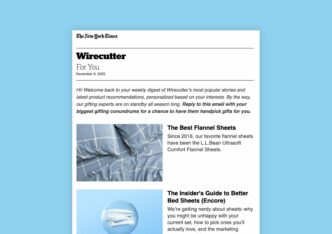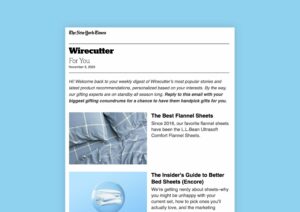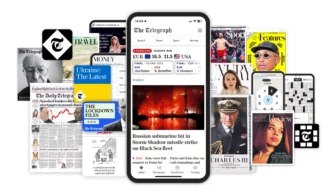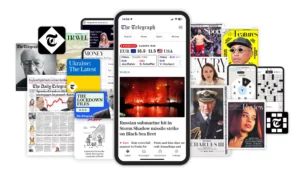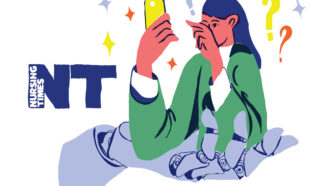
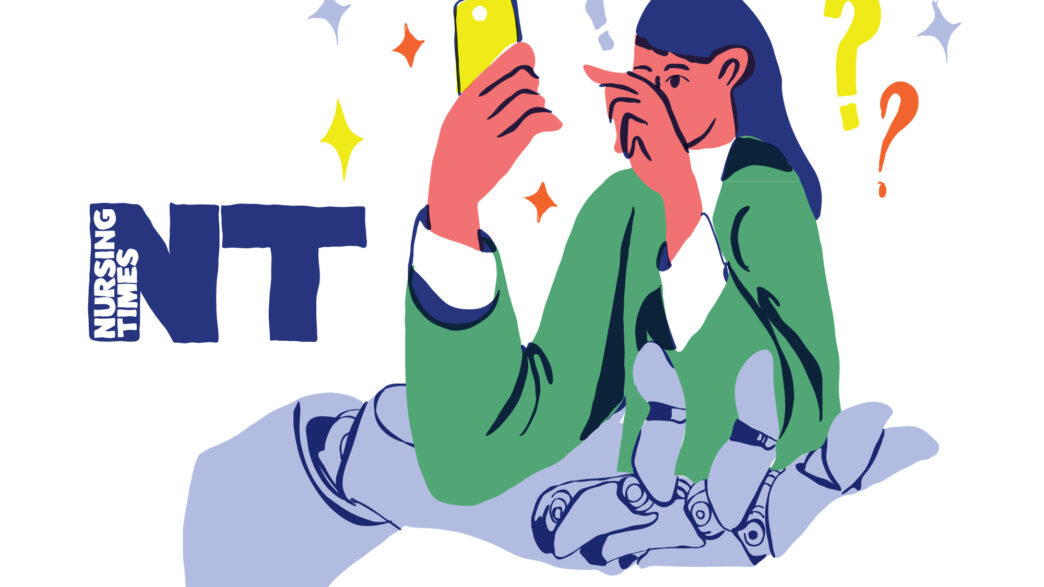
The industry is buzzing with talk of AI, but few speakers cut through the noise with as much clarity and practical insight as Robin Booth, Managing Director at Nursing Times.
Taking to the stage at The Audiencers’ Festival in London this June 24th, Robin didn’t just present a theoretical roadmap; he delivered a candid, ‘this is what we actually did’ account of how his team is not just surviving, but thriving in the emerging AI landscape.
Robin’s TL;DR: if publishers want to own the customer relationship in the AI era, it’s time to offer premium content coupled with premium experiences.
AI battlegrounds
Setting the scene for Nursing Times’ strategy with AI, Robin opened with some of the battlegrounds that he sees emerging, and the questions he hopes to answer:
- How much of the value generated by good content will go to publishers vs the AI developers?
- Where will audiences spend more time, on AI platforms or publishers?
- As AI mediates content discovery, how can publishers ensure their brand remains visible and trusted?
- What’s happening / coming isn’t a technology change, this is behaviour change. What will that behaviour change mean for content creators and content consumers?
“There will be a shift in the creation, finding, consumption and understanding of content.
We need to ask; where is our business going? What kind of publisher do we want to be in two- or three-years time? What relationship do we want with potential and existing subscribers? What services and experiences will subscribers expect? Once we’ve answered those questions, with the big caveat everything could change quickly, you can work backwards to a strategy.” – Robin Booth
His North Star for Nursing Times: To be a publisher driving subscription growth from a deeper, more direct, and more engaged relationship with customers, offering compelling content and services they can’t find elsewhere.
Introducing: ASK Nursing Times
ASK Nursing Times is an LLM search service launched in February 2024, a bold move that positioned them as an AI pioneer in the UK’s B2B space.
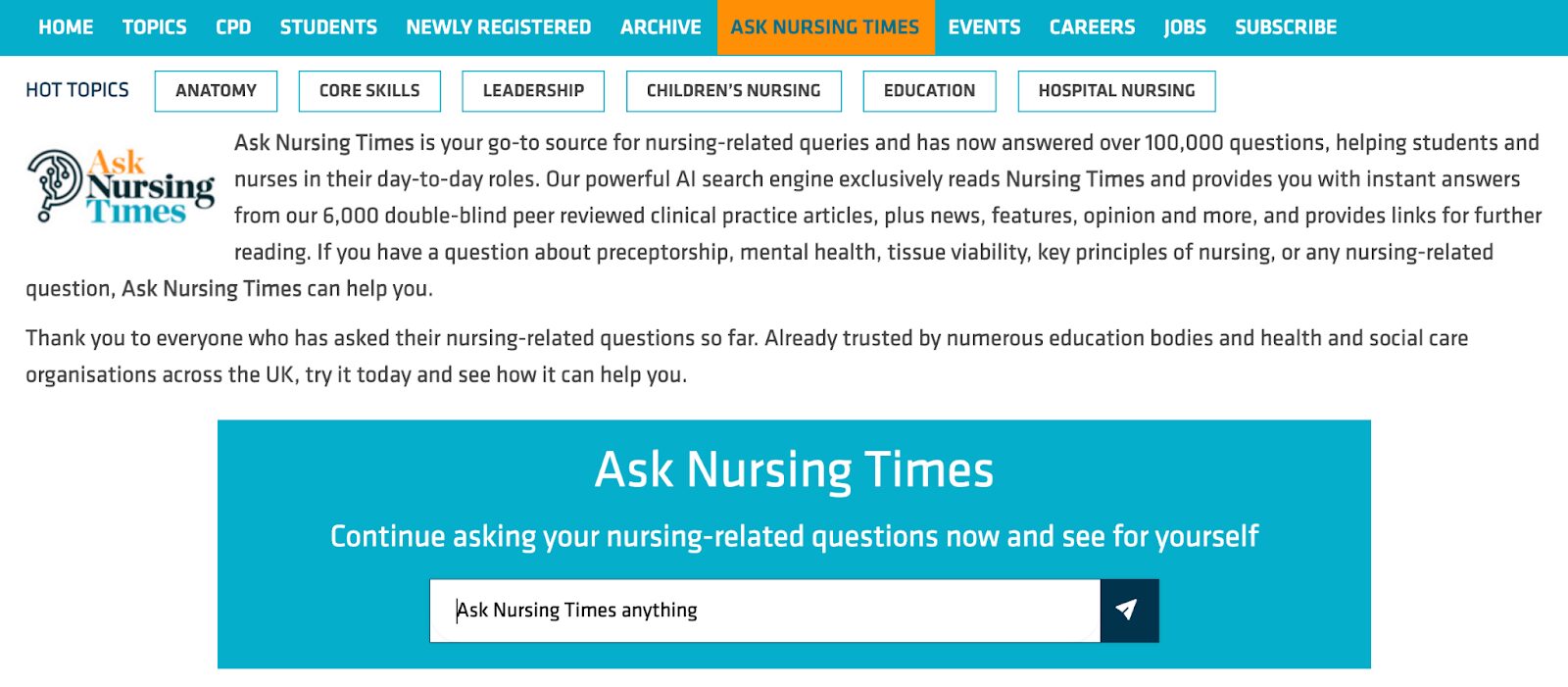
Key decisions underpinning ASK Nursing Times:
- Buy, not build: Speed was paramount. They partnered with Miso, an LLM search specialist, rather than trying to build in-house expertise from scratch.
- Walled garden: Crucially, they opted for a private AI model, ensuring answers were accurate, from a single trusted source, and that their content wouldn’t train external LLMs. “We must protect content value above all else,” he stated.
- Tiered access: A strategic move to drive conversions. Anonymous users get answers to AI-generated questions, but subscribers get unlimited access to ask their own questions, with free trial users getting a limited quota.
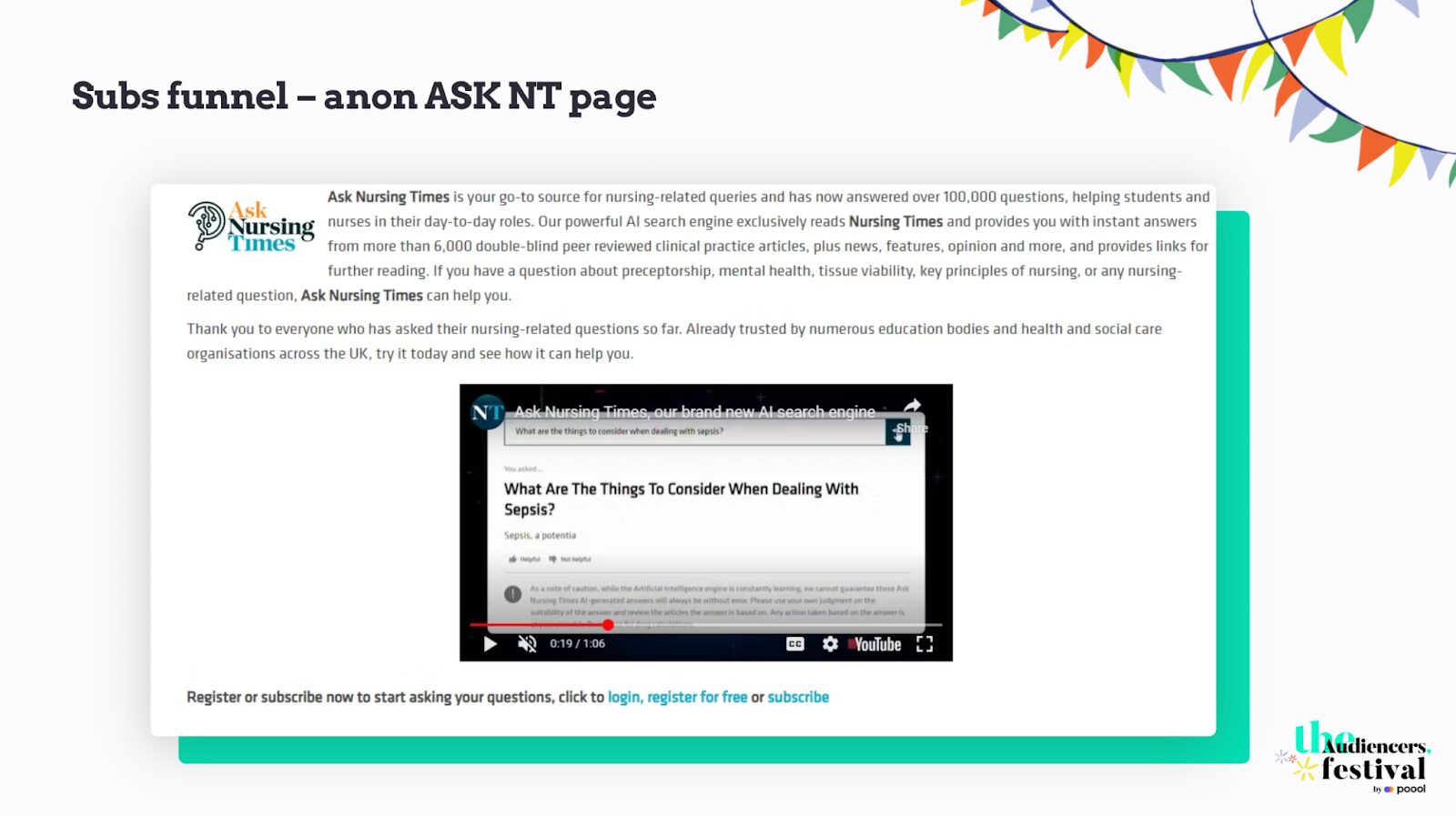
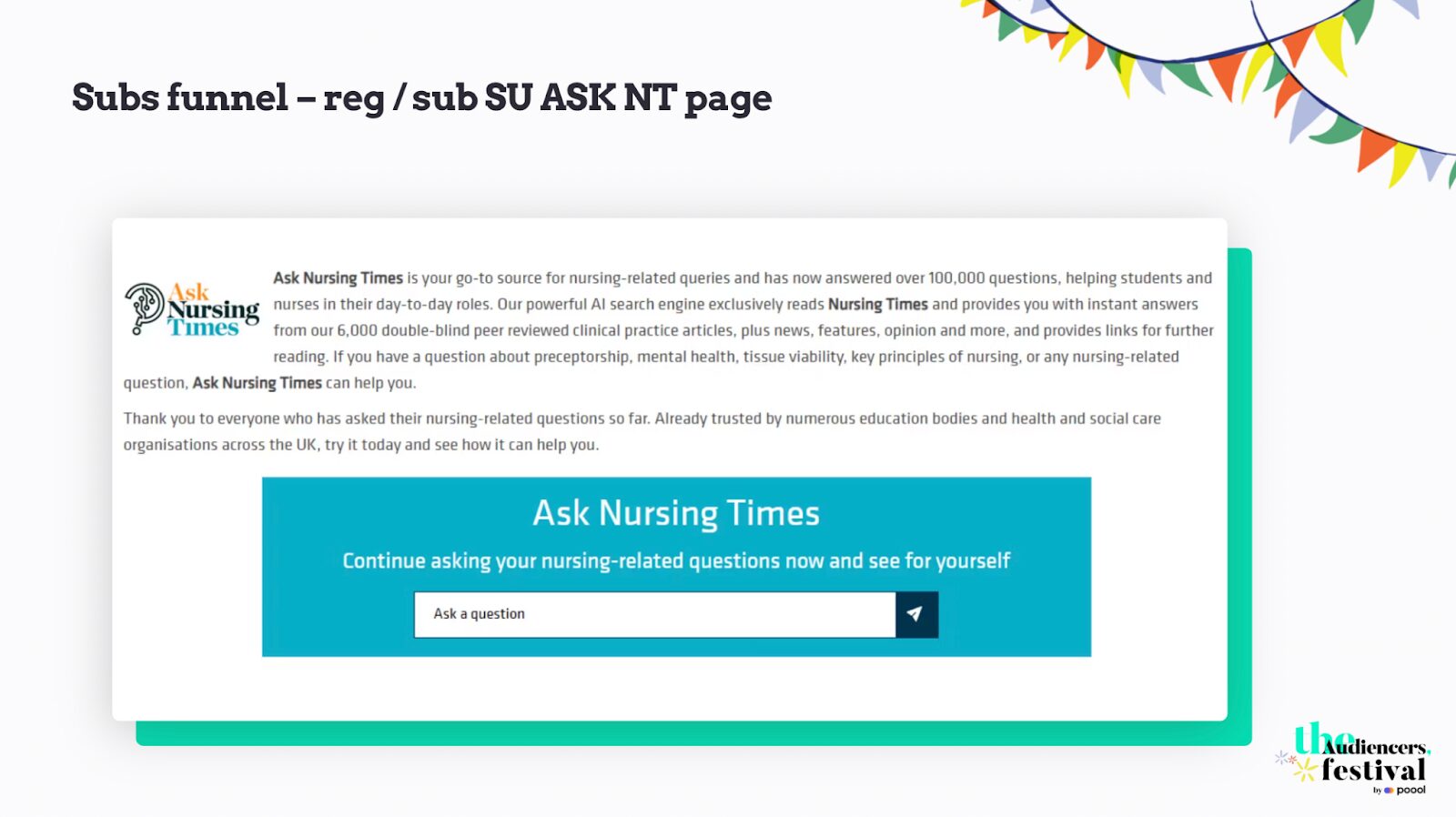
- Hybrid approach: They kept traditional search alongside the LLM, acknowledging users might not be ready for a forced switch.
Since launching, they have generated over 200,000 AI-powered answers, with a strong 5-6% click-through rate and a 6-percentage point increase in subscriber engagement. They’ve also directly acquired over 100 new subscribers from ASK links, proving AI-powered experiences can indeed generate new revenue.
Learnings from ASK were equally valuable: audiences are more forgiving of AI imperfections than editorial teams, usage is consistent (10k-15k answers/month), and a significant 80-90% of usage comes from recommended questions within articles – highlighting the need to present the service where users already are.
Building Value: construction news intelligence
Their second major initiative was Construction News Intelligence, a new premium subscription product launched in September 2024. This was a direct response to the challenge of growing revenue with existing “nice to have” news and analysis.
“We wanted to enter the higher value premium data subs space”, but cost was a barrier. AI changed this, reducing the investment to about 10% of what it would have been.
They decided to launch with entry-level data subscriptions, largely monetizing publicly available government data and their own proprietary data, like an interactive version of their popular CN100. They bypassed traditional web development bottlenecks by partnering with another agile AI data specialist, Flare Data.
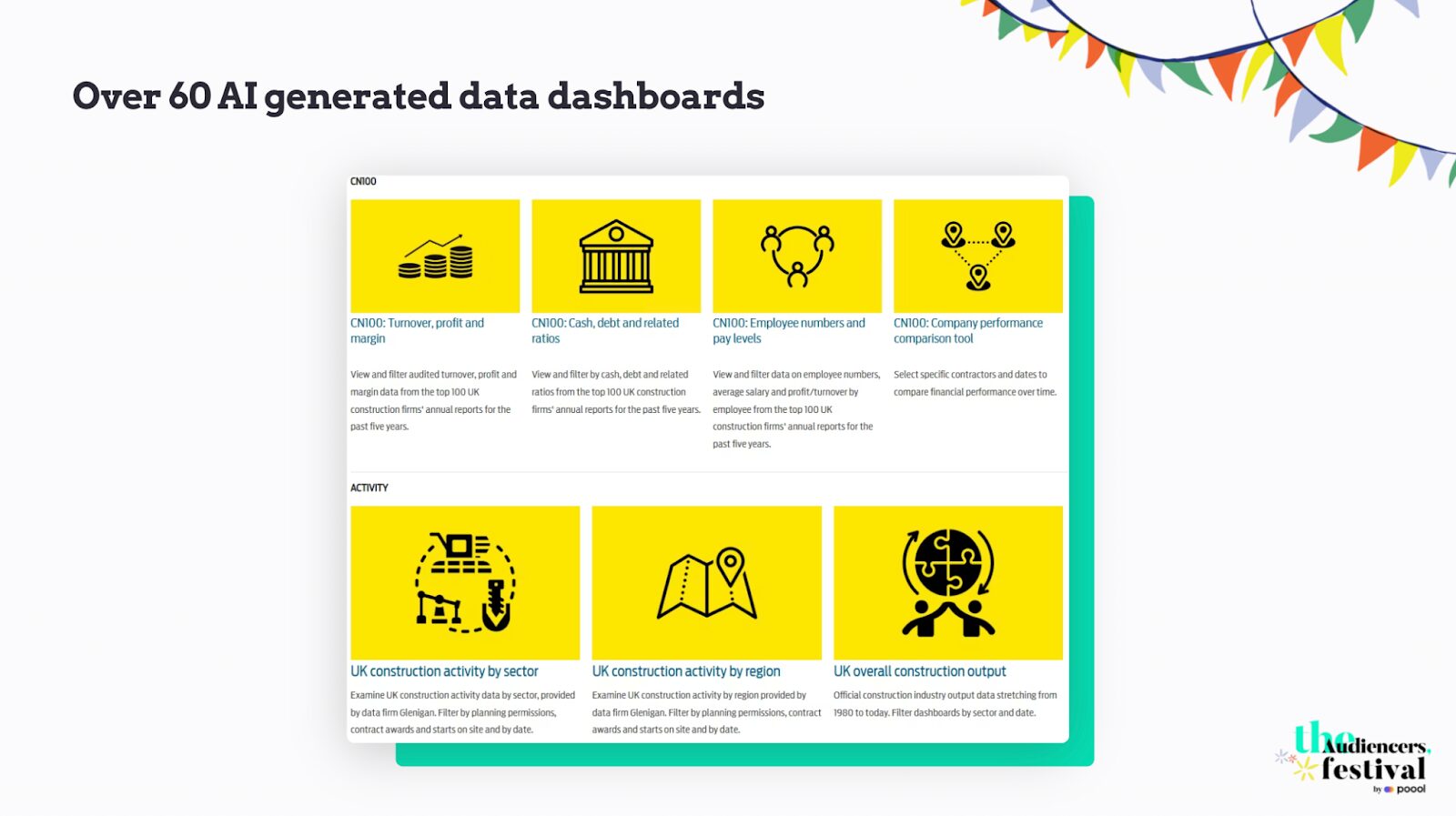
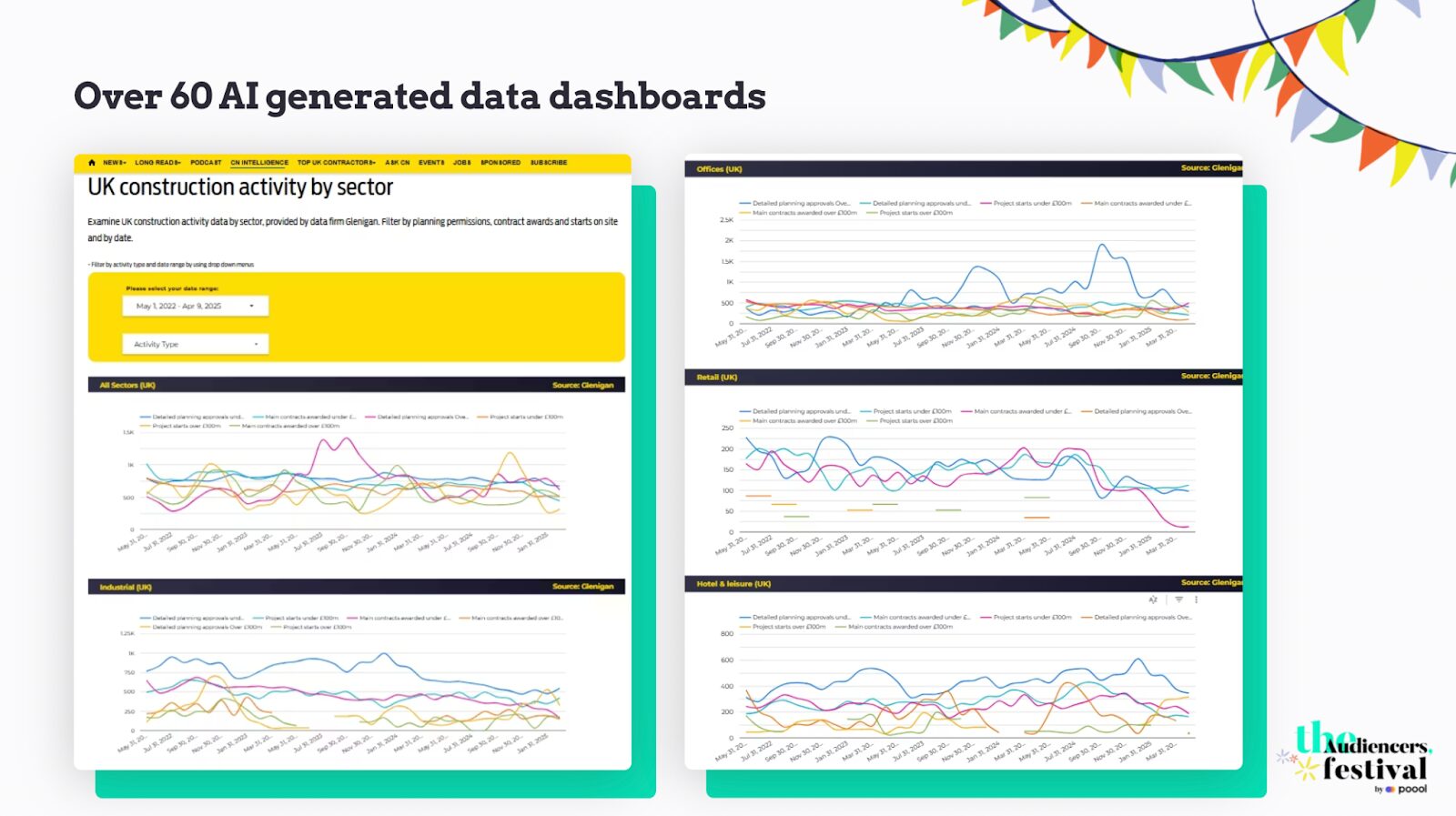
This led to over £100,000 in new premium subscriptions, with premium subs being 50% more expensive than basic and over half of new business opting for the premium tier. LGC Insights has also launched with an 80% uplift, and Nursing Insights is on the way.
The learnings reinforced the strategy – you can generate revenue from public data if it’s hard to find/use, or if you provide unique insights. AI enables quick deployment, leading to big yield increases. New users are the best conversion opportunity, and focusing on clear use cases is vital.
What’s next for Nursing Times
As you can imagine after hearing their story so far, Robin has ambitious plans for the future:
- AI-powered personalization: Moving from assuming what readers want to allowing them to decide for themselves, creating a tailor-made information resource.
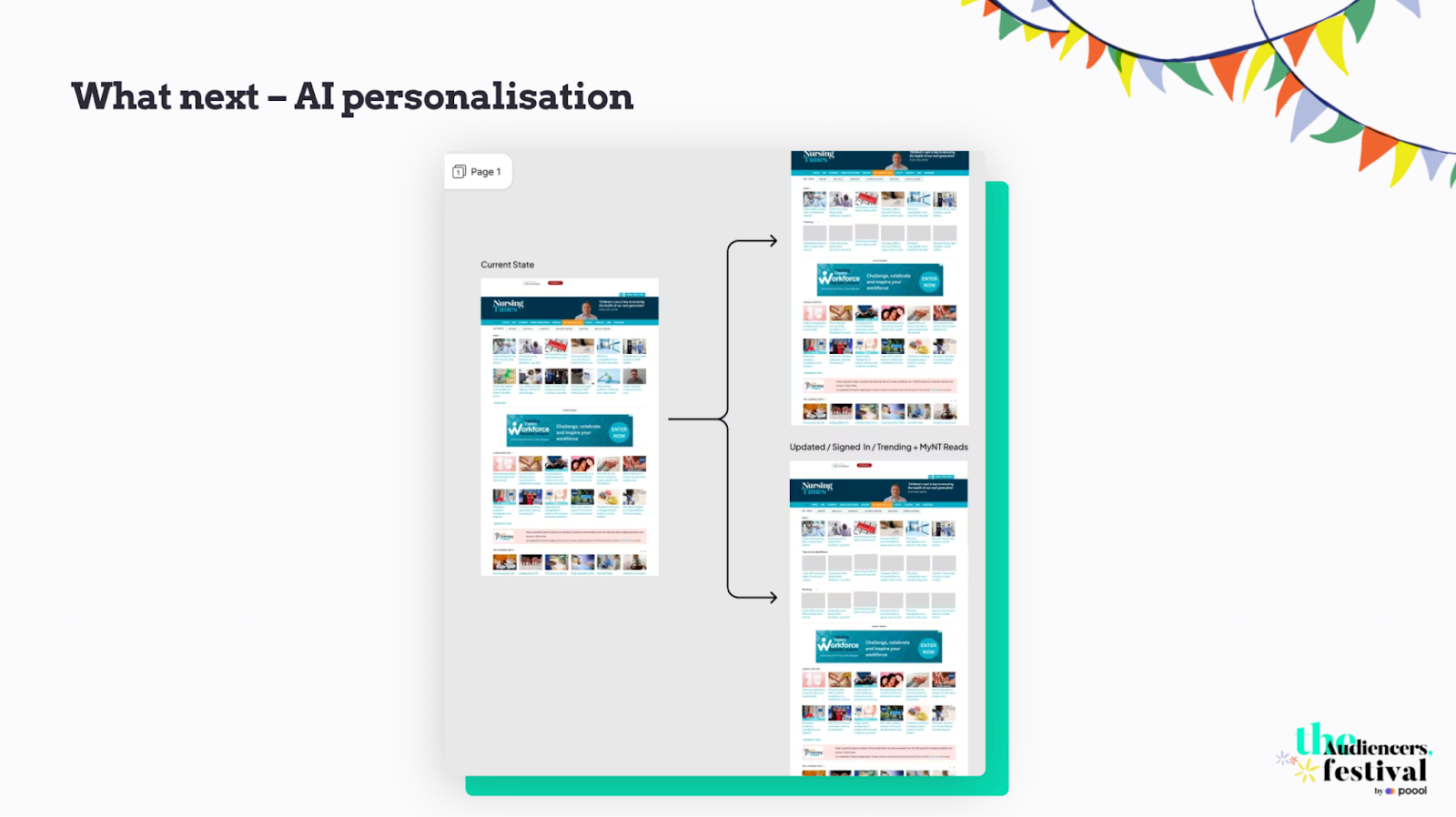
- Hybrid search evolution: Further integrating LLM into all search.
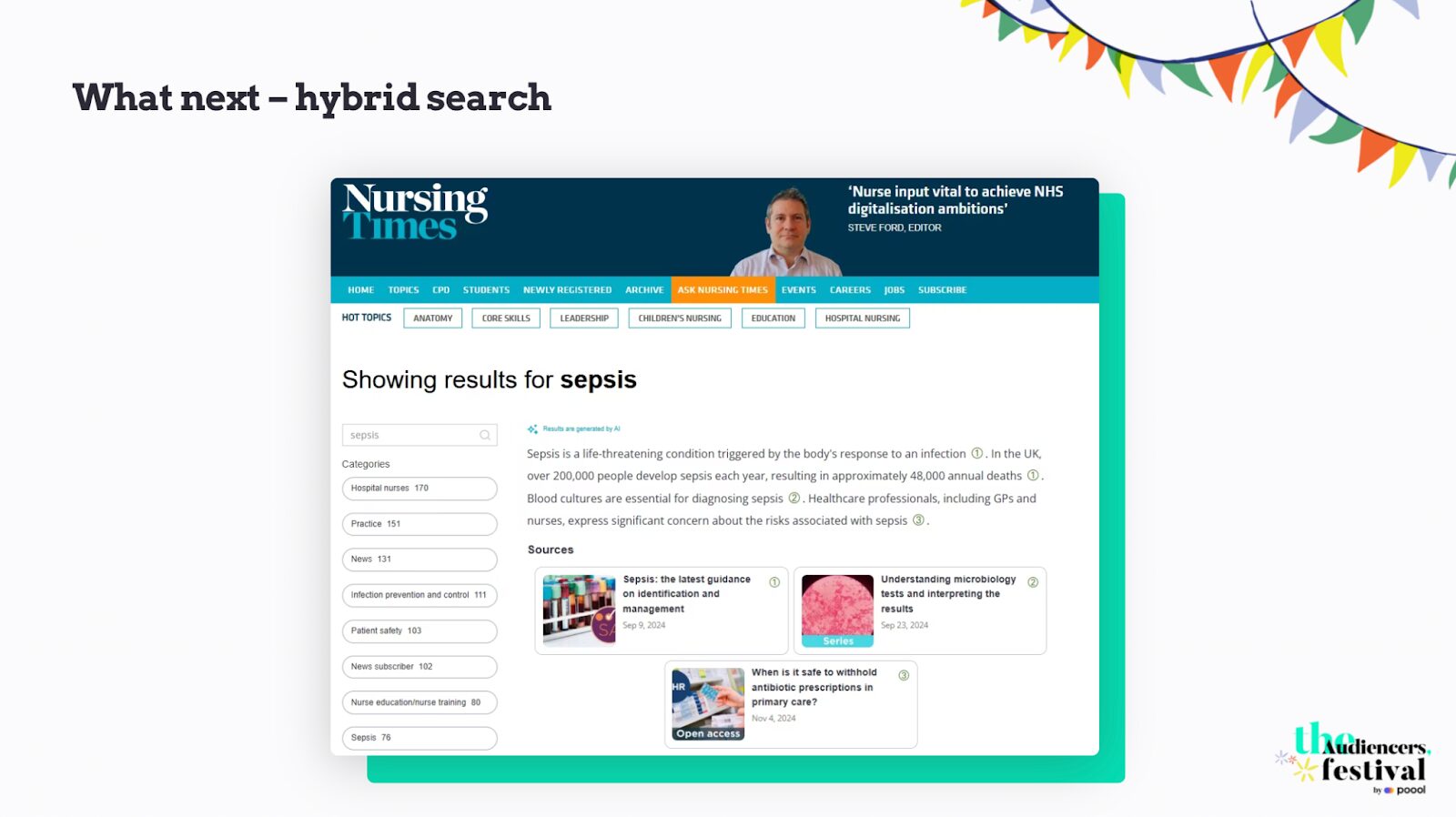
- “Answers 3.0”: Deeper, conversational answers with quotes, author references, alerts, briefings, and multi-language support.
- High-quality web apps with push notifications: A recognition that “with the much-rumoured death of the website,” apps offer a more direct customer relationship.
- Super premium data products: Synthesized and proprietary data for high-value subscribers.
- Analyst-style reports: Leveraging expertise to generate verified reports using AI.
Robin ended with a powerful call to action: publishers must relentlessly track and adapt to changing user behaviours, seeing opportunity as much as threat.
“We got this wrong in the last big disruption, letting big tech make vast profits from our content and our audience. There is no excuse for getting it wrong this time.”



